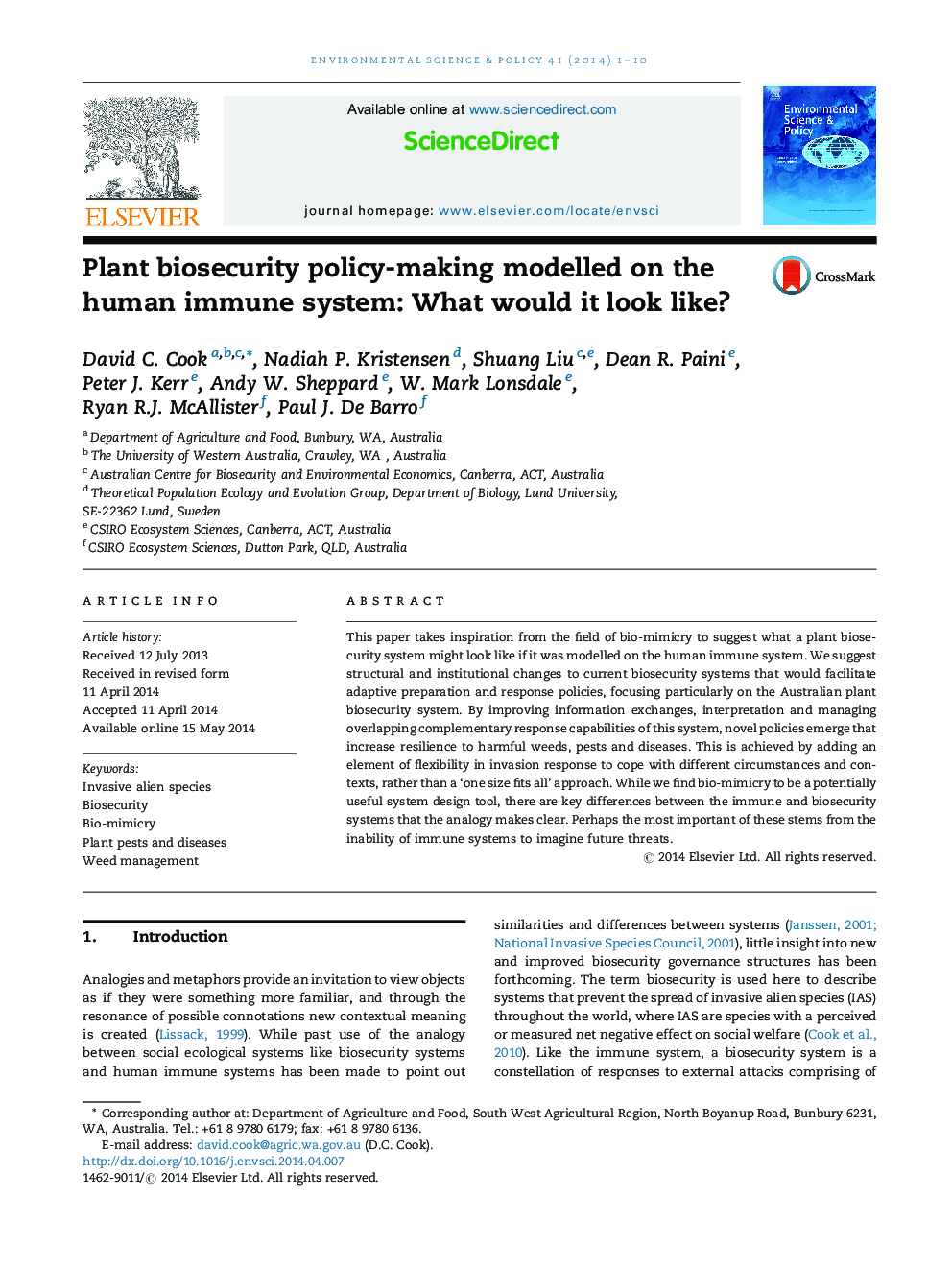| Article ID | Journal | Published Year | Pages | File Type |
|---|---|---|---|---|
| 1053570 | Environmental Science & Policy | 2014 | 10 Pages |
•The human immune system is used to re-model Australia's plant biosecurity system;.•We suggest improvements based on innate, intrinsic and adaptive immune system elements;.•Pre-border biosecurity improvements could be made if trading partners engage in crosstalk;.•Cost sharing arrangements should apply to all invasion responses, not just eradication;.•Small biosecurity cooperatives would increase flexibility and adaptability of response actions.
This paper takes inspiration from the field of bio-mimicry to suggest what a plant biosecurity system might look like if it was modelled on the human immune system. We suggest structural and institutional changes to current biosecurity systems that would facilitate adaptive preparation and response policies, focusing particularly on the Australian plant biosecurity system. By improving information exchanges, interpretation and managing overlapping complementary response capabilities of this system, novel policies emerge that increase resilience to harmful weeds, pests and diseases. This is achieved by adding an element of flexibility in invasion response to cope with different circumstances and contexts, rather than a ‘one size fits all’ approach. While we find bio-mimicry to be a potentially useful system design tool, there are key differences between the immune and biosecurity systems that the analogy makes clear. Perhaps the most important of these stems from the inability of immune systems to imagine future threats.
